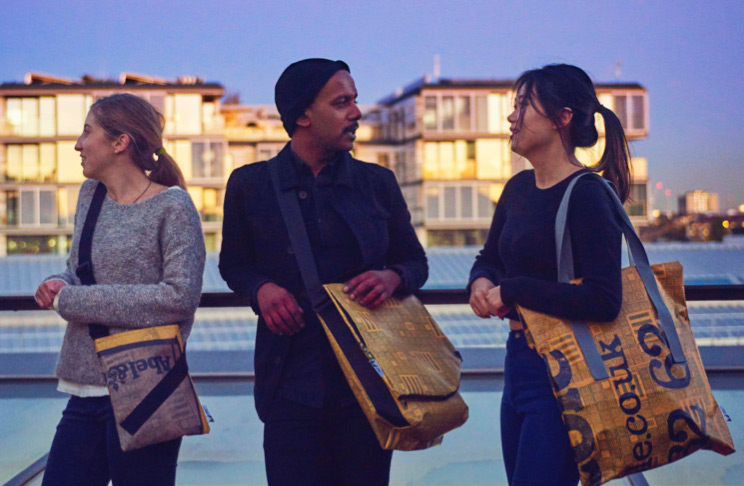
“Design unlike art, doesn’t allow you to design just for yourself. You’re designing for another, it requires communication and empathy.”
Lorraine Gamman, Director of Design Against Crime
Design Against Crime takes design-thinking into Serco’s HMP Thameside prison to develop resilience and empathy among inmates and create a collection of anti-theft bags in the process. The DAC Research Centre, based here at Central Saint Martins, has previously developed other anti-crime design measures such as proposed solutions for ATM crime and innovating new responses to the criminal and creative practices of graffiti.
Makeright is unique not because it utilises the making skills of prison inmates but because it additionally combines these skills with design. Over eight weeks, students create anti-theft bags from design to conception with user profiles and initial concepts through a series of iterations and prototyping. The overall objective of the project is to equip inmates with skills, such as ‘purposeful learning’, useful for future employment on their release and to help decrease their chance of reoffending.
Makeright is a ground-breaking design course for prison inmates. The results, a series of bags with inmate-designed anti-theft components, launches today, and the bags will be sold at the Sue Ryder shop in Camden, with all profits going towards hospice and neurological care. The bags have been made out of lorry tarpaulin donated to the Makeright course by Abel & Cole, the organic food company, overprinted with a design by Graphic Design graduate Claire Matthews.
Keith Jarvis, Serco’s lead for prison industries at HMP Thameside comments:
“Working with offenders on employment skills is not exactly revolutionary. But what is different with this course is that inmates learn design skills and knowledge that can be transferred to many aspects of their lives, not only for employment. Even before the Coates Review May 2016 recommendations, at HMP Thameside Serco has employed design graduates in our Textiles studio and pioneered a ‘graduate volunteering’ scheme with staff, students and alumni of University of the Arts London. Our Makeright learners are mentored one-to-one by UAL and other design volunteers, and this support helps inmates find ways to reduce re-offending.”
Professor Lorraine Gamman, Design Against Crime Research Centre said:
“Makeright is a Design Against Crime response to pickpockets, bag theft and street crime delivering designs by inmates who want to put something good back into Society. Our emphasis is on the design process, as well as producing anti-theft bags, because it is through rehabilitative design education that we are able to teach prisoners new entrepreneurial skills which will help them in the outside world. Makeright bags and wearable accessories assume that people are prepared to take measures to protect themselves against thieves, while helping inmates gain qualifications and deliver bags that can be sold for a charitable cause.”
Carol Davis, Sue Ryder Prison and Community Justice Manager, said:
“Our Prison and Community Justice Programme has been going since 2006 and helps rehabilitate offenders by giving them new skills that might help reduce re-offending.
This innovative new scheme with Serco at HMP Thameside we hope will eventually help us raise vital funds while the prisoners gain qualifications and skills to help them into employment on release. The first five designs will be available to the public in November 2016.
For many years we’ve recycled our delivery boxes and packaging wherever possible, always keen to reduce waste and reuse where we can, but I never thought I’d see the day we’d find such a brilliant new use for our old van panels,” said Abel & Cole’s Sustainability & Environmental Manager Marta Salvà Cifuentes. “We are always looking for new ways to do the right thing by the environment and help to make a difference in our local community so when we heard about the project being run by the Design Against Crime Research Centre and realised we could help we were really excited.”
The below film was made by Lotje Sodderland and follows the Makeright project, its participants, and those making it happen.
More info:

